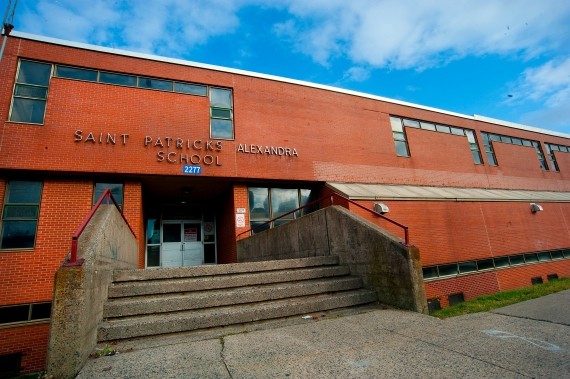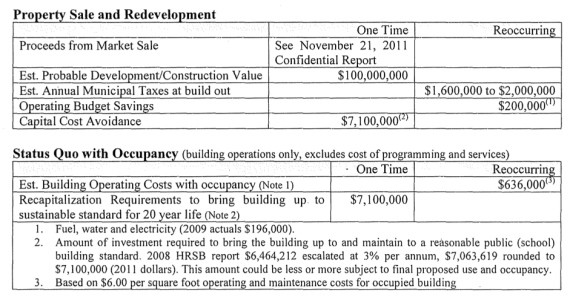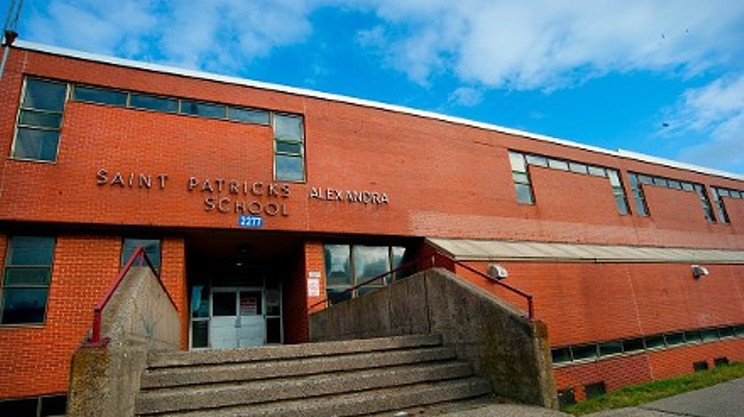The north end community was rightly incensed by city council's December 13 decision to sell the former St. Pat's-Alexandra school site to developer Joe Metlege without first offering the school to neighbourhood community groups, as required by council policy.
In the face of that anger, council reversed the sale on January 10, and directed staff to bring back a report on what went wrong with the sale.
The staff report is now completed, and was released Friday as part of the agenda for this coming Tuesday's council meeting.
It is a despicable document.
If the community was angry in December, they should be boiling mad now. And people not directly part of the north end community should likewise be disgusted that their government officials are engaging in a straight up racist attack on fellow citizens; the broader community should be just as indignant for what's being done in their name.
The staff report epitomizes the faceless, bureaucratic false framing, misdirection and half-truths that is modern racism, so let's put names and faces to it, and lift the curtain to reveal their bullshit.
The report was produced by people with an agenda. Everything in city hall is now micro-managed by the CAO's office; nothing is initiated without chief bureaucrat Richard Butts' approval, and nothing comes forward that he doesn't personally vet and approve. This document, too, was approved by Butts and his lieutenant, deputy CAO Mike Lebrecque. They directed a fellow named Peter Stickings, who heads the city's real estate department, to actually write the report.
I'm told that the St. Pat's sale is part of a larger directive from Butts to Stickings to sell off as much land as quickly as possible in order to raise capital for construction of a stadium. This directive also threatens to derail the rebuilding of the former Bloomfield School site as a complex oriented around community uses.
The report starts with a startling admission that staff did not follow proper procedures related to the surplus St. Pat's site. Indeed, council policy is that surplus schools must first be offered to community groups, who are to be given a reasonable opportunity to put together a business plan for using the school site; only if the community groups don't want it or can't make a good case for it is the property to be offered for sale on the open market. That didn't happen in this case: community groups were not consulted and given time to put together proposals, but rather the property went directly to sale.
"This gap between Procedures for the Disposal of Surplus Schools and general practice," reads the staff report, "has led to a level of dissatisfaction with respect to the process."
No shit.
But this is no apology. Rather, the screw up is used as reason to double-down on breaking the policy: instead of adhering to the policy, going back and doing it right, the report attempts to (mis)lead councillors down a path where the only right decision is not to follow the policy, but to ditch it.
This is accomplished through what is portrayed as an objective analysis of the costs and benefits of either following the policy or not. We are provided flow charts, and options, and references to legal issues which will be discussed in secret Tuesday. But it all boils down to a (supposedly) dispassionate cost analysis:
Got that? We could either do the policy right, and spend $7.1 million to fix up the school buildings, and then another $636,000 a year so the community organizations can use them OR we could sell the buildings for some secret amount, then Metlege will build $100 million worth of stuff on the site, we'll get $2 million in property taxes each and every year, and we won't have to spend $7.1 million to fix up the buildings or the $200,000 a year we're spending now to maintain them.
Framed that way, the only responsible decision would be to break the policy and sell the property. That's clearly what Butts wants council to do, albeit the report doesn't actually make a recommendation--selling the school is the only fiscally prudent option.
But this is not a dispassionate analysis of costs and benefits. It's loaded dice, a stacked deck, smoke, mirrors.
Let's start with the either-or choice. It's either one or the other, we're told, but that's not the case. Their are any number of other options: The community groups could make use of some of the property, and the rest of it could be sold off for development, for instance.
The bald lie in the above chart is that the only way the community groups could use the site is "status quo with occupancy." In reality, the city's own policy dictates that:
If there is sufficient interest expressed by a community group or groups, the Municipality may consider selling or leasing the building for local community purposes. Past experience indicates such groups do not have the financial means to either purchase or lease the property at market value, and therefore usually seek some form of assistance from the Municipality. Staff of the Community Grants and Partnering Program would review the applications and business plans submitted by such groups to determine an appropnate level of support from HRM, and make that recommendation to Council.Clearly, the intent is to allow the groups to put together a business plan, and for that to be assessed by council. "Past experience" aside, we have three community groups---the North End Community Health Clinic, the Mi'kmaq Friendship Centre and the Richard Preston Centre for Excellence---with established, successful operations that are now paying rent elsewhere. At the very least, they'll be able to to bring their existing rent payments to the school site. Additionally, the groups have a proven track record of being able to raise capital and operating costs from outside sources and other granting agencies---with enough time to pursue more funding, they very well could be put together a business plan that would reduce or eliminate the need for city subsidy.
The staff report, however, presupposes no outside funding, without giving the groups the opportunity to demonstrate otherwise, and then on the basis of that presupposition concludes that the groups should therefore not be given the opportunity to demonstrate otherwise.
But the most important false accounting in the chart is "Capital Cost Avoidance" of $7.1 million. That figure is arrived at by looking at the cost of refitting the school buildings. Ignored are the capital and other costs of not giving the community groups a new home.
The community groups' buildings on Gottingen Street are ancient, and will soon need to be replaced, or the groups will have to pay for new homes elsewhere. What will that cost? Why isn't that figure in the chart? Is this an admission by city staff that they have no intention of helping the groups continue to exist when it comes time to replace those buildings?
And what if the lack of a home means the community groups can no longer exist? What would be the dollar costs of losing them---the increased costs of health care and the costs of lost community supports in an impoverished neighbourhood, policing and the like?
Staff looks at the school site through the narrowest of all possible lens: the development of the school site will create $100 million of "Development/Construction value," which in turn will produce $2 million in annual property taxes. The implication is that if this site isn't developed, we'll lose out on that $2 million every year, forever.
But that's not how the world works. To a large degree---and especially in the over-heated real estate market that is the post-shipbuilding contract award north end---development is a game of whack-a-mole. If development can't happen at site A, it'll pop up over at site B. Metlege apparently has financing to build $100 million worth of stuff; he'll use it somewhere, count on it.
In any event, an obscenely fawning Chronicle-Herald profile of Metlege suggests that he has no plan to immediately develop the site anyway. He first will oversee the reconstruction of Fenwick Tower, which won't be complete until at best 2016, then will move on to the development of the former Trinity Church site at Brunswick and Cogswell Streets which will take, what, another five years? Only then will Metlege turn his attention to the St. Pat's-Alexandra site.
Undoubtedly, once the school sale is complete, Metlege will immediately raze the buildings and put a fence around the empty lot. And there it will sit, for at least a decade, an eyesore in the heart of community that has enough eyesores already. What will be the costs of that? How much will nearby property assessments, and therefore property tax returns, be reduced? What are the social costs of having yet another abandoned construction site in our city? Why aren't those costs on the chart?
The community groups aside, developers work on thin margins, and make money on finding under-priced property to exploit; that Metlege can buy the property and let it sit empty for a decade tells me that the city sold it for a song. Perhaps the under-priced sale value should also be included on staff's chart.
There's an unspoken premise behind the staff report: The existing neighbourhood does not matter. If there's immediate money to be made, well, screw the community. And this is why the staff report is at its heart racist. Is it even conceivable that, say, the concerns of residents of the south end or the Shore Drive in Bedford, would be reduced to such a slanted monetary analysis? No. But residents of the north end are expendable.
In reality, selling the school only makes financial sense if you prevent an option that doesn't fit the false framing from being heard, ignore all the subsequent future social costs and lost opportunity costs of providing a home for the community groups, and instead look only at the immediate return to just the capital fund in the city budget.
Losing community groups in an urban poor neighbourhood has lots of other costs that I haven't mentioned---the increased transit costs to provide transportation for the working poor pushed off the peninsula, and the higher wage costs to downtown businesses, for example---but the biggest cost of all is the incalculable human costs to people alienated from their government, losing the social networks and supports built up over decades, and displaced from their homes because the wider city doesn't care.




















